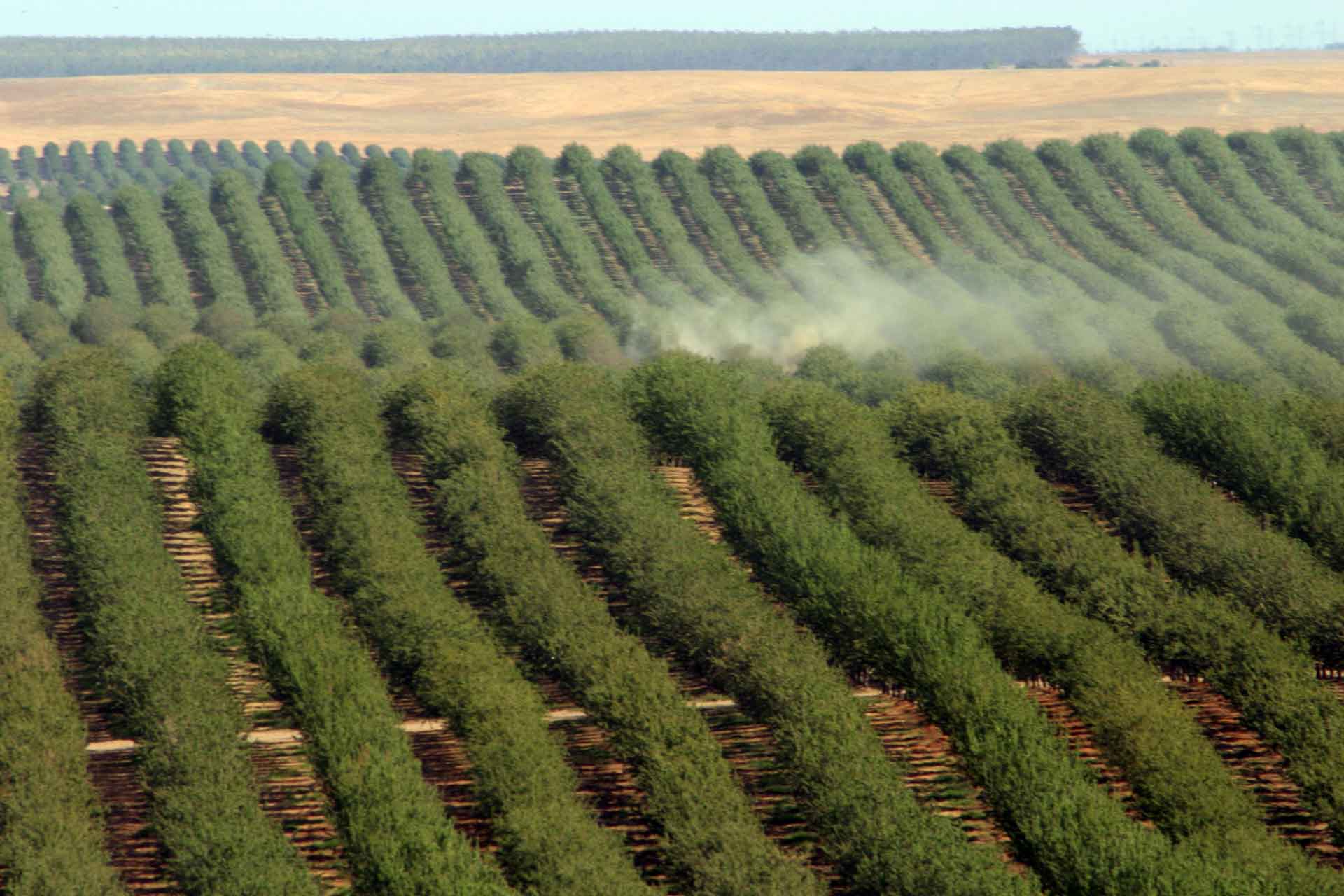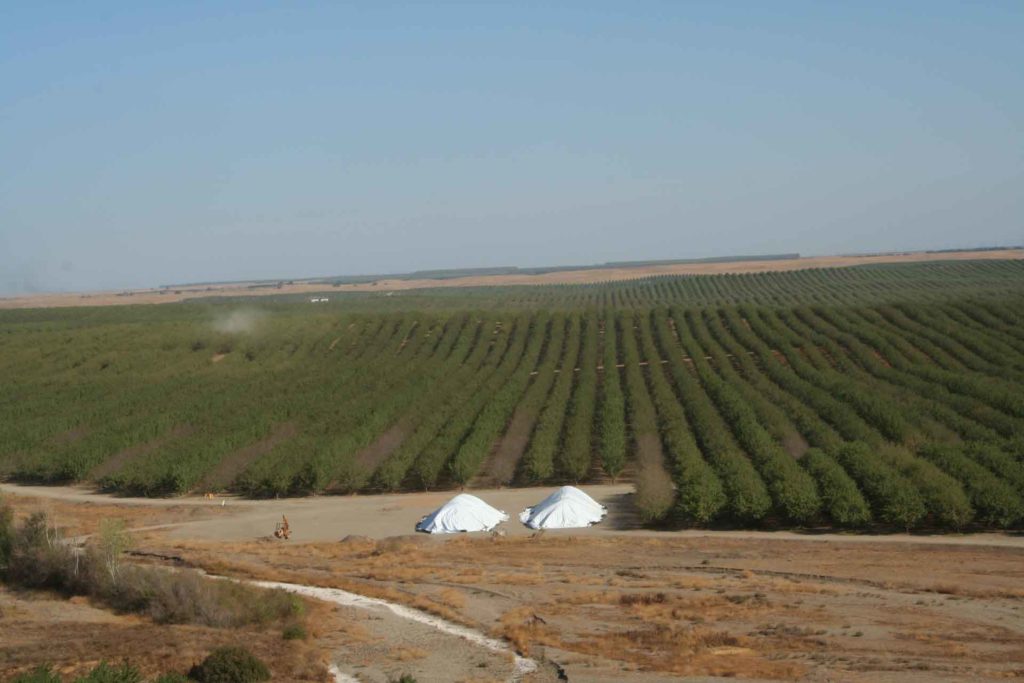A major factor in next year’s almond harvest is water stress postharvest.
Almond Board of California (ABC) and University of California (UC) research over the past 30 years has identified postharvest irrigation as critical to crop yields the following year.
The research shows that from mid-August to early November, mature almond trees can demand an estimated 12-15 inches of water depending on soil type and weather. About 70 percent of that demand is in the six weeks immediately after harvest. Research by David Goldhamer and Elias Fereras found that the first eight inches of water applied during postharvest is the most critical water applied when it comes to crop yields.
Those eight inches of water applied at almond floral bud differentiation improve carbohydrate development and direct energy to creation of next year’s flowers. Both quantity and quality of those flowers are affected by water stress.
ABC also stresses that practices should be employed to keep leaves on the trees through early November. This can be achieved by reducing tree stress throughout the harvest period by timely shaking of trees and understanding the soil moisture requirements and rate of water use. Varieties may need to be irrigated differently.
If trees are defoliating due to water stress or mites, irrigation to re-leaf trees has been shown to increase crop load compared to not applying water.
Research funded by ABC has also shown that applications of nitrogen (N) postharvest can be relatively inefficient due to tree defoliation, leaching by early rainfall or weather that lowers tree water use. Mid-July leaf nitrogen and residual soil nitrate should be taken into consideration when determining N application rates.
Work at UC Davis showed 15-20 percent of the N demand occurs from harvest through the postharvest period. This suggests that somewhere between 20-30 pounds of N is used during that time. A further breakdown of the uptake curve shows that less than eight percent of the annual need occurs after September.
Nitrogen applications in orchards where trees had leaf N levels greater than 2.5 percent are most likely not needed. Research by University of California Cooperative Extension (UCCE) farm advisor Franz Niederholzer showed that mid-September or postharvest N applications to trees with a 2.5 percent leaf N did not improve crop yields the following year. Over four years of the study, it also showed that N applied in orchards with adequate N was being lost to leaching.
The study suggests that in later harvest areas or later varieties, postharvest N applications can be eliminated and the N budget can be applied in the spring during periods of rapid uptake.

Cecilia Parsons
Cecilia Parsons has lived in the Central Valley community of Ducor since 1976, covering agriculture for numerous agricultural publications over the years. She has found and nurtured many wonderful and helpful contacts in the ag community, including the UCCE advisors, allowing for news coverage that focuses on the basics of food production.
She is always on the search for new ag topics that can help growers and processors in the San Joaquin Valley improve their bottom line.
In her free time, Cecilia rides her horse, Holly in ranch versatility shows and raises registered Shetland sheep which she exhibits at county and state fairs during the summer.

















